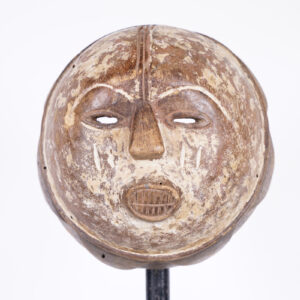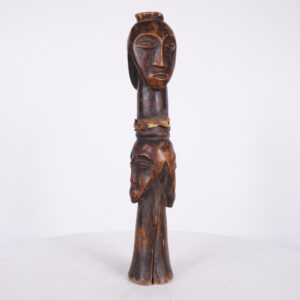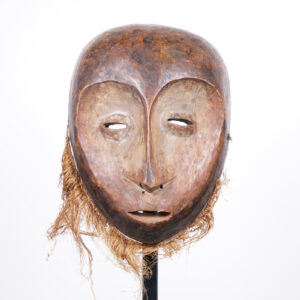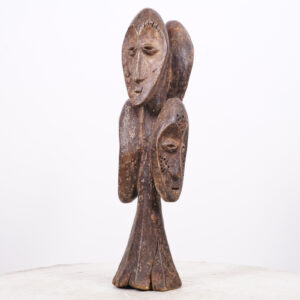After their exodus from Uganda in the 17th century, the Lega tribes-people eventually settled on the west bank of the Lualaba River in the Democratic Republic of Congo (formerly Zaire). Known also as the Warega, the 200,000 people who constitute the Lega tribe live in autonomous villages, collectively situated at the summit of a hill surrounded by a palisade. The position of chief, referred to as the Kindi, is held bu the oldest member of the clan who must also hold the highest grade within the Bwami society. The function of the Bwami, which is open to both men and women, is to regulate the social and political life of the Lega. Progression through the seven male and four female grades is made possible by the giving of presents and the participation in initiations. Division of labor is gender based and akin to the economic patterns of other tribes living in a forest environment: men hunt and clear new land and women cultivate manioc.
Lega art is exclusively focused on and associated with the Bwami society. Each object has a precise role and function within their ceremonies and rituals and is used only by the initiated. These artifacts are numerous and are created from a variety of materials, particularly wood, ivory, bone and elephant hide.
Source:
Baquart, Jean-Baptiste. The Tribal Arts of Africa. New York: Thames and Hudson Inc. 1998. Print.
Art from this Tribe
-
Sale!

Unusual Lega Mask 7.75″- DR Congo – African Art
$52.50View More -
Sale!

Lega Statue with Four Faces 14.75″- DR Congo – African Tribal Art
$75.00View More -
Sale!

Lega Mask with Raffia 14″ – DR Congo – African Tribal Art
$62.50View More -
Sale!

Lega Statue with Four Faces 18″- DR Congo – African Tribal Art
$72.50View More

